VW Tiguan VS Mazda CX-30 – Specs, Efficiency & Price Comparison
Find out now which car fits your needs better!
The VW Tiguan (SUV) is powered by a Petrol MHEV, Plugin Hybrid, Diesel or Petrol engine and comes with a Automatic transmission. In comparison, the Mazda CX-30 (SUV) features a Petrol MHEV engine and a Manuel or Automatic gearbox.
When it comes to boot capacity, the VW Tiguan offers 652 L, while the Mazda CX-30 provides 430 L – depending on what matters most to you. If you’re looking for more power, you’ll need to decide whether the 272 HP of the VW Tiguan or the 186 HP of the Mazda CX-30 suits your needs better.
There are also differences in efficiency: 0.40 L vs 5.70 L. In terms of price, the VW Tiguan starts at 32800 £, while the Mazda CX-30 is available from 25200 £.
Compare all the key specs now and find out which model fits your lifestyle best!
In the competitive compact SUV segment, the Mazda CX-30 and VW Tiguan offer distinct advantages that cater to different driving preferences. The CX-30 impresses with its sporty handling, elegantly crafted interior, and fuel efficiency, making it a favorite for those prioritizing driving dynamics and aesthetic appeal. Meanwhile, the Tiguan stands out with its spacious cabin, advanced tech features, and versatile cargo space, appealing to families and those needing more practicality in their daily adventures.
VW Tiguan
The VW Tiguan presents itself as a versatile and practical option in the SUV market, combining a stylish design with a spacious and comfortable interior. It offers a smooth driving experience, making it well-suited for both urban environments and longer journeys. With its focus on safety and innovative technology features, the Tiguan remains a compelling choice for families and adventurers alike.
details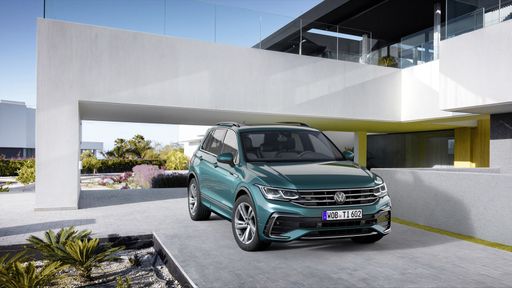 @ Volkswagen
@ Volkswagen
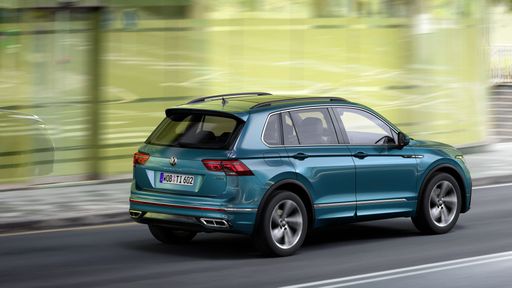 @ Volkswagen
@ Volkswagen
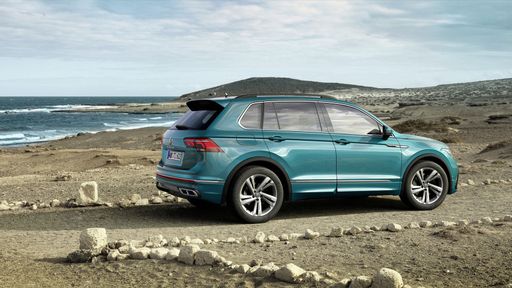 @ Volkswagen
@ Volkswagen
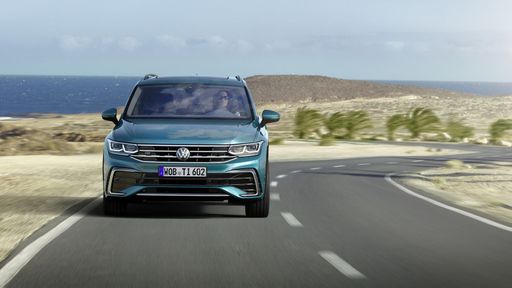 @ Volkswagen
@ Volkswagen
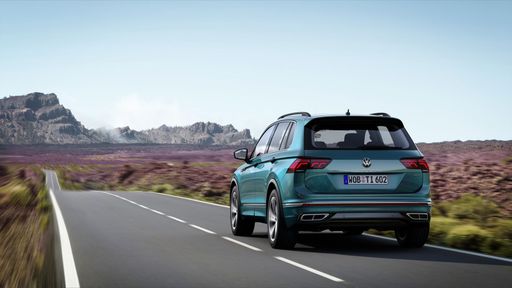 @ Volkswagen
@ Volkswagen
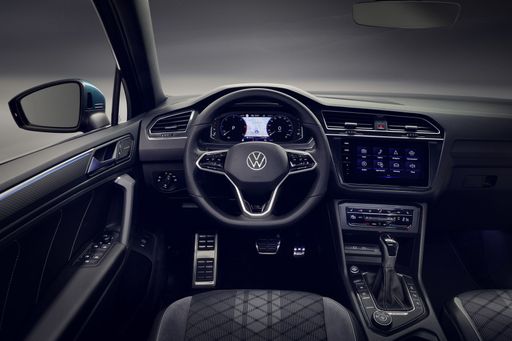 @ Volkswagen
@ Volkswagen
Mazda CX-30
The Mazda CX-30 effortlessly combines sleek design with a sense of adventure, making it an appealing choice for urban explorers and countryside enthusiasts alike. Inside, the cabin is thoughtfully designed, offering both comfort and cutting-edge technology to enhance the driving experience. Its performance on the road is agile, providing a smooth and engaging journey for drivers and passengers.
details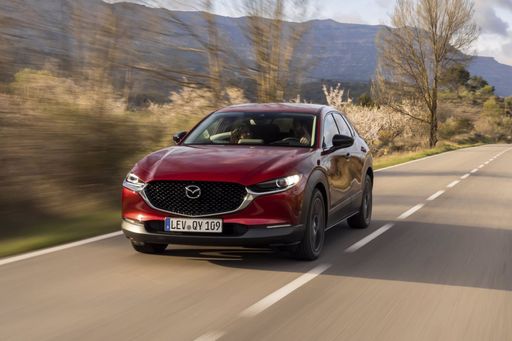 @ de.mazda-press.com
@ de.mazda-press.com
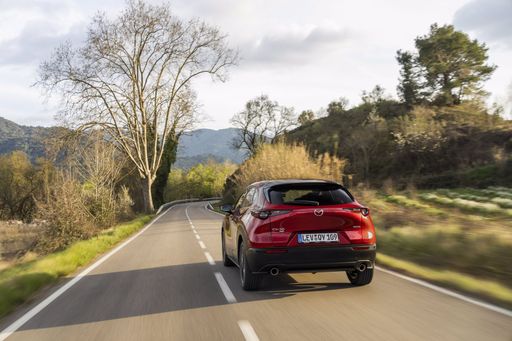 @ de.mazda-press.com
@ de.mazda-press.com
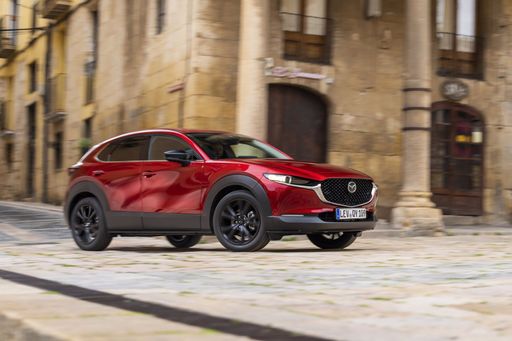 @ de.mazda-press.com
@ de.mazda-press.com
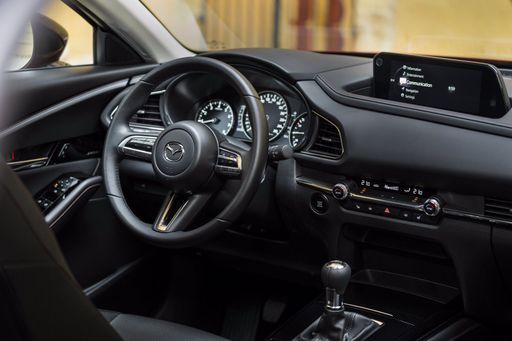 @ de.mazda-press.com
@ de.mazda-press.com
The Showdown of Compact SUVs: Mazda CX-30 vs. VW Tiguan
In the ever-competitive compact SUV segment, two models stand out for their blend of performance, efficiency, and style: the Mazda CX-30 and Volkswagen Tiguan. Both vehicles aim to offer superior driving experiences, but they cater to slightly different audiences. This comparison will delve into their technical specifications and innovations to help you choose the perfect SUV for your needs.
Design and Dimensions
The Mazda CX-30 boasts a contemporary design philosophy with sleek contours and a refined look. It measures 4,395 mm in length, 1,795 mm in width, and 1,540 mm in height. The VW Tiguan, on the other hand, features a more traditional SUV silhouette, larger in stature at 4,539 mm in length, 1,842-1,859 mm in width, and 1,656-1,658 mm in height. While both offer a rugged design, the CX-30 leans towards a sporty aesthetic, whereas the Tiguan emphasizes a commanding road presence.
Powertrains and Performance
The Mazda CX-30 comes with a choice of petrol mild hybrid engines offering a power range between 140-186 HP, catered to either front-wheel or all-wheel-drive systems. Accelerating from 0-100 km/h takes between 8.3 to 10.3 seconds, and it can reach a top speed of up to 204 km/h. Options for both manual and automatic transmissions provide flexibility for drivers.
Volkswagen Tiguan offers a more varied engine lineup, including petrol, mild hybrid, plugin hybrid, and diesel. It boasts a power output from 130 to 272 HP and offers only automatic transmission options, specifically a dual-clutch automatic, for smooth and efficient gear changes. It accelerates from 0-100 km/h in as quick as 5.9 seconds. A plugin hybrid variant impressively claims an electric range of 112-113 km on a single charge, enhancing fuel efficiency.
Fuel Efficiency and Environmental Impact
Mazda’s less complex MHEV system allows the CX-30 to deliver a combined fuel consumption ranging between 5.7 to 6.6 L/100 km, emitting between 129 to 148 g/km of CO2, placing it within the D-E efficiency class. This efficiency makes it an attractive option for eco-conscious drivers.
The Tiguan’s range of powertrains offers a broader spectrum of fuel consumption rates. Particularly, its plugin hybrid variant showcases impressive fuel efficiency at just 0.4 to 0.5 L/100 km and CO2 emissions as low as 8-10 g/km, classifying it within the B efficiency class. Standard engines consume between 5.3 to 8.5 L/100 km, with emissions spanning 139 to 193 g/km.
Interior and Cargo Space
Both vehicles comfortably seat five passengers. The CX-30 offers a trunk capacity of approximately 430 liters, enough for daily tasks and medium-sized luggage. The Tiguan, highlighting its larger build, comes with a more generous cargo space of up to 652 liters, appealing to those who prioritize practicality and space.
Conclusion
Choosing between the Mazda CX-30 and VW Tiguan largely depends on personal preferences and priorities. The CX-30 shines with its sporty, compact design, and economical engines, making it ideal for city dwellers and those seeking a stylish ride. On the other hand, the Tiguan stands out with its versatile engine lineup, spacious interior, and advanced hybrid options, perfect for families and adventurers needing extra space and versatility.
Both models bring a unique set of innovations and practical features, each projecting a strong case within the competitive SUV market.

|

|
|
|
|
Costs and Consumption |
|
|---|---|
|
Price
32800 - 51000 £
|
Price
25200 - 36800 £
|
|
Consumption L/100km
0.4 - 8.5 L
|
Consumption L/100km
5.7 - 6.6 L
|
|
Consumption kWh/100km
-
|
Consumption kWh/100km
-
|
|
Electric Range
119 - 129 km
|
Electric Range
-
|
|
Battery Capacity
19.70 kWh
|
Battery Capacity
-
|
|
co2
8 - 193 g/km
|
co2
129 - 148 g/km
|
|
Fuel tank capacity
45 - 58 L
|
Fuel tank capacity
48 - 51 L
|
Dimensions and Body |
|
|---|---|
|
Body Type
SUV
|
Body Type
SUV
|
|
Seats
5
|
Seats
5
|
|
Doors
5
|
Doors
5
|
|
Curb weight
1599 - 1890 kg
|
Curb weight
1455 - 1587 kg
|
|
Trunk capacity
490 - 652 L
|
Trunk capacity
422 - 430 L
|
|
Length
4539 mm
|
Length
4395 mm
|
|
Width
1842 - 1859 mm
|
Width
1795 mm
|
|
Height
1656 - 1658 mm
|
Height
1540 mm
|
|
Payload
460 - 533 kg
|
Payload
458 - 496 kg
|
Engine and Performance |
|
|---|---|
|
Engine Type
Petrol MHEV, Plugin Hybrid, Diesel, Petrol
|
Engine Type
Petrol MHEV
|
|
Transmission
Automatic
|
Transmission
Manuel, Automatic
|
|
Transmission Detail
Automat. Schaltgetriebe (Doppelkupplung)
|
Transmission Detail
Schaltgetriebe, Automatikgetriebe
|
|
Drive Type
Front-Wheel Drive, All-Wheel Drive
|
Drive Type
Front-Wheel Drive, All-Wheel Drive
|
|
Power HP
130 - 272 HP
|
Power HP
140 - 186 HP
|
|
Acceleration 0-100km/h
5.9 - 10.6 s
|
Acceleration 0-100km/h
8.3 - 10.3 s
|
|
Max Speed
198 - 242 km/h
|
Max Speed
191 - 204 km/h
|
|
Torque
220 - 400 Nm
|
Torque
238 - 240 Nm
|
|
Number of Cylinders
4
|
Number of Cylinders
4
|
|
Power kW
96 - 200 kW
|
Power kW
103 - 137 kW
|
|
Engine capacity
1498 - 1984 cm3
|
Engine capacity
1998 - 2488 cm3
|
General |
|
|---|---|
|
Model Year
2024
|
Model Year
2024
|
|
CO2 Efficiency Class
E, B, F, G
|
CO2 Efficiency Class
D, E
|
|
Brand
VW
|
Brand
Mazda
|
VW Tiguan
Introducing the VW Tiguan: A Blend of Style and Innovation
The VW Tiguan has consistently been a popular choice among SUV enthusiasts, combining practicality with a touch of elegance. In the latest iteration, Volkswagen has continued this tradition with a range of technical updates and innovations.
Powertrains: Versatility Meets Efficiency
The VW Tiguan comes with a variety of engine options, catering to different preferences and needs. From the efficient petrol mild-hybrid variants to the environmentally friendly plug-in hybrids, and the robust diesel engines, there is something for everyone. The power output ranges from a modest 130 PS to an impressive 272 PS, ensuring that drivers can enjoy a powerful and dynamic driving experience.
Innovation remains at the heart of the Tiguan’s engineering. The plug-in hybrid models, for example, boast an electric range of up to 113 km, making them ideal for those looking to reduce their carbon footprint while still enjoying the flexibility of a traditional engine.
Advanced Transmission and Drivetrain
Equipped with a smooth and responsive automatic transmission, the Tiguan ensures a comfortable drive. The dual-clutch gearbox provides quick and seamless gear changes, enhancing the driving experience. Additionally, the Tiguan is available in both front-wheel and all-wheel drive configurations, offering excellent traction and stability across different driving conditions.
Performance and Efficiency
The Tiguan's performance capabilities are complemented by its efficiency. With fuel consumption as low as 0.4 L/100km for hybrid models, owners can enjoy long trips with fewer stops for refuelling. The CO2 emissions are also impressively low, aligning with modern environmental standards and expectations.
Design and Dimensions
The Tiguan’s aesthetic appeal is undeniable, with a robust character that exudes confidence and sophistication. Its dimensions—4,539mm in length, 1,842 to 1,859 mm in width, and up to 1,658mm in height—provide ample interior space, making it a versatile vehicle for families and adventure seekers alike.
Practicality is further emphasised by its sizeable boot space, ranging from 490 to 652 litres, ensuring plenty of room for luggage or shopping.
Safety and Technology
Volkswagen has not compromised on safety or technology. The Tiguan is equipped with the latest driver assistance systems, ensuring a safe journey for its occupants. Features like adaptive cruise control, lane assist, and emergency braking provide an extra layer of protection.
Pricing and Value
Starting from €38,250 to €59,535, the Tiguan offers a range of specifications and features to match different budgets. When considering the advanced technology, engine options, and the premium feel of the cabin, it presents excellent value for money.
Conclusion: The Ultimate SUV Experience
The VW Tiguan continues to impress with its blend of innovative technology, performance, and practicality. Whether you’re looking for an eco-friendly hybrid with a long electric range or a powerful diesel for longer hauls, the Tiguan provides an all-encompassing solution. With its refined design and superior comfort, it remains a leading choice in the SUV segment.
Mazda CX-30
The Mazda CX-30: Where Innovation Meets Efficiency
The Mazda CX-30 stands as a testament to Mazda's commitment to blending the best of technology and design. Positioned as a subcompact SUV, the CX-30 delivers the practicality of an SUV with the agile driving dynamics of a smaller vehicle. As we delve into its technical and innovative aspects, the CX-30 showcases why it's a formidable choice in today's competitive automotive market.
Engine and Performance: Power Meets Efficiency
The heart of the Mazda CX-30 lies in its sophisticated engine offerings. At its core, the e-SKYACTIV-X engines provide a unique balance of performance and fuel efficiency. With 186 PS at your disposal, these engines optimise the combustion process, reducing both fuel consumption and emissions. The engine's mild-hybrid system further enhances its efficiency by capturing energy during braking, making it one of the more environmentally conscious choices on the market.
Transmission and Drivetrain Options
Buyers have the flexibility to choose between a manual or an automatic transmission, catering to diverse driving preferences. The available all-wheel drive (AWD) system provides enhanced stability and control, particularly useful in variable weather conditions or challenging terrains. Those preferring a classic driving experience can opt for the front-wheel drive (FWD) variants, which still deliver impressive traction and handling.
Design and Dimensions
The Mazda CX-30's dimensions—4395 mm in length and 1795 mm in width—offer a spacious and comfortable interior while maintaining a sleek and modern exterior design. Its aerodynamic form not only enhances its aesthetic appeal but also contributes to improved performance and fuel efficiency. The interior, adorned with high-quality materials, reflects Mazda’s dedication to creating a premium driving experience.
Interior Comfort and Technology
Inside, the CX-30 does not disappoint. With a cabin that seats five comfortably, it strikes an excellent balance between style and practicality. The infotainment system, replete with intuitive controls and connectivity options, ensures that drivers remain connected and entertained on the go. Additionally, advanced safety features bolster the confidence of any journey, safeguarding occupants and pedestrians alike.
Pricing and Model Variants
The Mazda CX-30 is offered in a variety of model configurations, each catering to different budgetary and feature preferences. The entry-level models provide excellent value, while higher trims, such as the Exclusive-Line and Takumi, offer luxurious enhancements and additional technology features. With pricing from €28,940 to €42,390, the CX-30 positions itself as an attractive option in its segment.
Conclusion: The Ideal Mix of Performance and Practicality
In summary, the Mazda CX-30 emerges as a versatile and appealing option for those seeking a compact SUV that does not compromise on performance or sophisticated engineering. Its combination of innovative technology, efficient powertrains, and driver-centric features make it a worthy contender in its class. Whether navigating urban landscapes or exploring rural roads, the CX-30 delivers an engaging and reassuring drive.
The prices and data displayed are estimates based on German list prices and may vary by country. This information is not legally binding.
